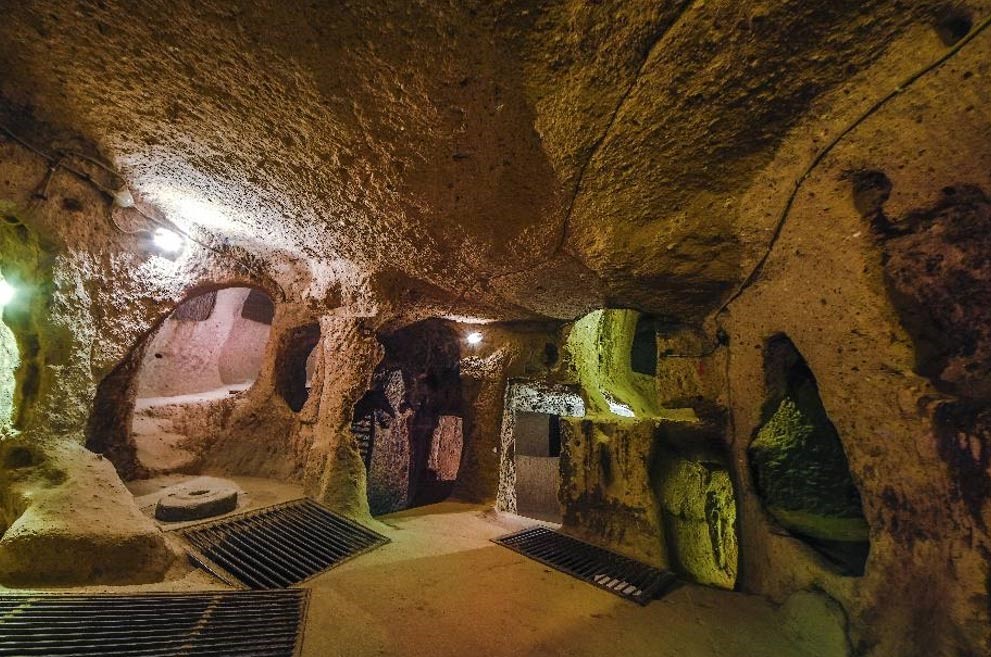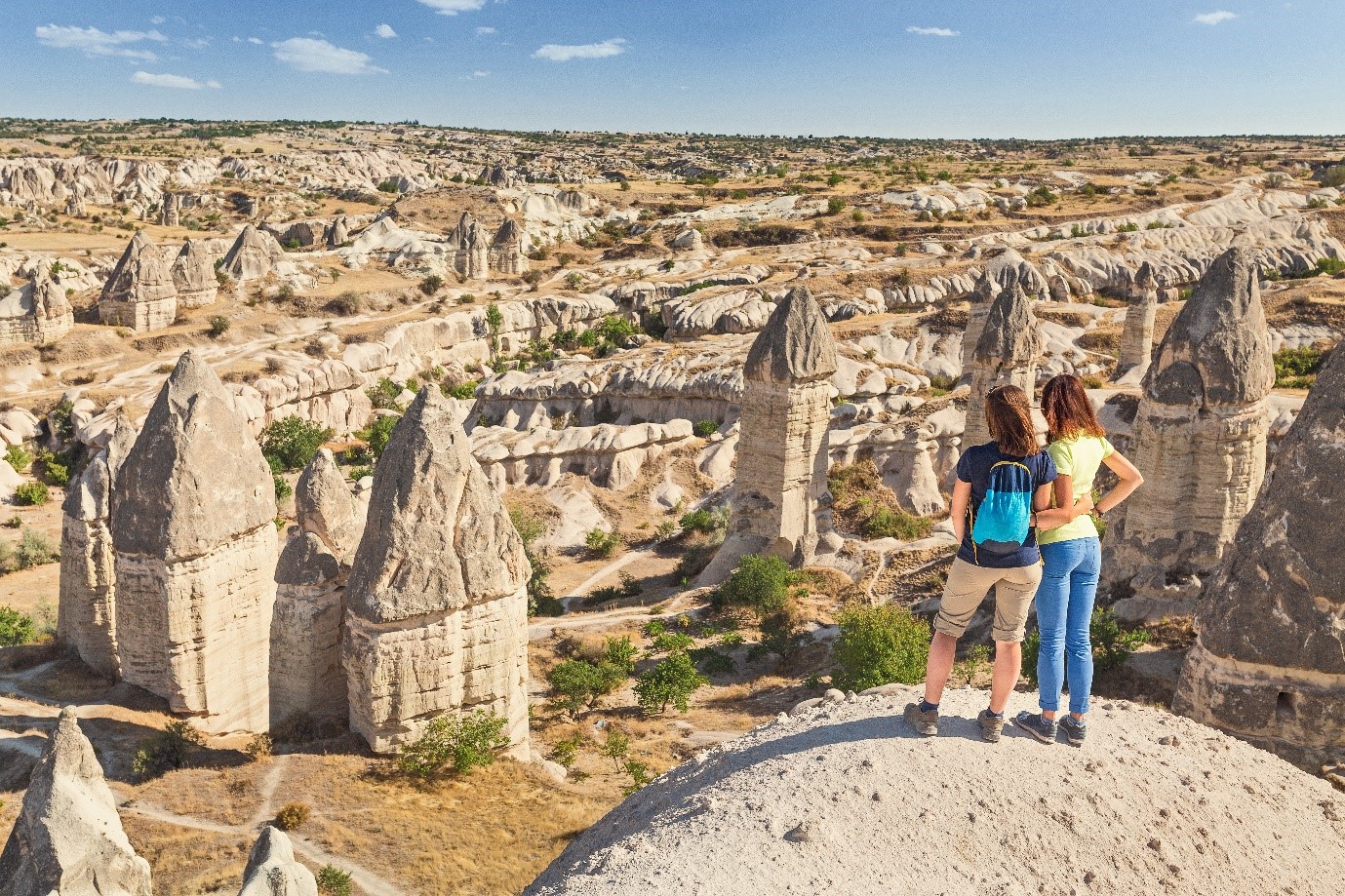
The region of Cappadocia in central Turkey is home to one of the most spectacular landscapes in the world – deep valleys and soaring rock formations dotted with homes, chapels, tombs, temples and entire subterranean cities harmoniously carved into the natural landforms.
Cities, empires and religions have risen and fallen around these unique underground havens, yet they remain occupied to this day. Through the ages, the Hittites, Persians, Alexander the Great, Rome, The Byzantine Empire, Ottoman Empire, and Turkey have all governed this spectacular region of Central Anatolia.
Cappadocia covers the region between the cities of Nevşehir, Ürgüp and Avanos, the sites of Karain, Karlık, Yeşilöz, Soğanlı and the subterranean cities of Kaymaklı and Derinkuyu. One hundred square miles with more than 200 underground villages and tunnel towns complete with hidden passages, secret rooms and ancient temples and a remarkably storied history of each new civilization building on the work of the last, make Cappadocia one of the world’s most striking and largest cave-dwelling regions of the world.
Kaymakli Underground City is Cappadocia’s most spread out underground city, with a maze-like layout of rooms and passageways across four levels. It includes ventilation shafts, massive stone doors, a winery, church, stables, and a unique stone used as a melting pot for copper.

Kaymakli Underground City is contained within the citadel of Kaymakli in the Central Anatolia Region of Turkey. ( Mariana Ianovska /Adobe Stock)
The rock formations that make up Cappadocia were created by volcanic eruptions, erosion, and wind. Over three million years ago a volcanic eruption deposited a blanket of ash across the 1500 square mile landscape which formed into a soft rock. This rock, slowly eaten away by wind and time, has created some spectacular forms, including the well-known ‘fairy chimneys’, some of which have even been carved out as homes or hermitages.
Top image: The ‘fairy chimneys’ of Cappadocia. Source: EdNurg / Adobe Stock






